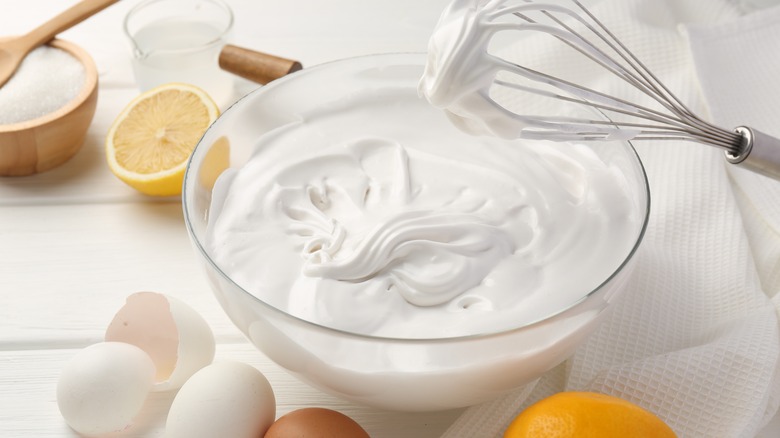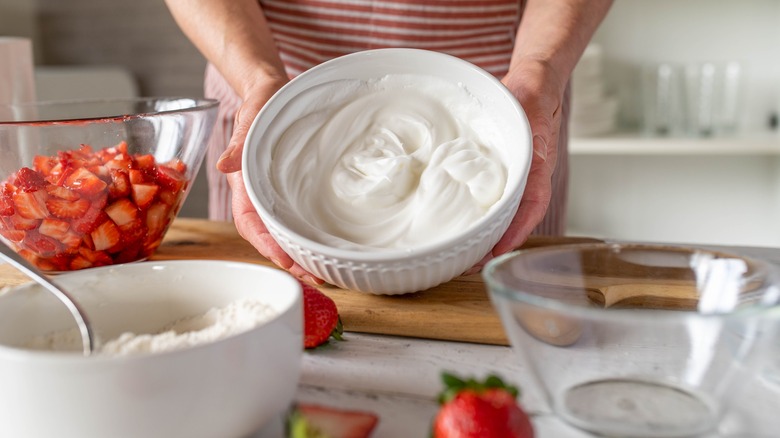The Downside To Baking With A Store-Bought Carton Of Egg Whites
Egg whites are all the rage for people at every stage. Those on a weight loss journey use them as an alternative to whole eggs because they are high in protein but low in fat, cholesterol, and calories; bakers know egg whites as the essential component in recipes that call for fluffiness; and mixologists frequently use them in cocktails. To get to the egg whites, one has to crack the egg and either discard or repurpose the yolk. That's why it's very clutch (pun intended) that pre-cracked egg whites are available for purchase in a carton, saving you some trouble. Or do they? While they can indeed rival fresh egg whites in certain aspects when it comes to baking, they tend to fall short for one main reason: They don't whip up.
Packaged egg whites have to be pasteurized before they can be sold. Pasteurization is a heat treatment that kills the potential pathogens and prolongs the shelf life of the whites, but it also changes their consistency. Fresh egg whites are thicker and more gooey than store-bought ones; the latter are runnier and more watery, making them impossible to whip up (which is often also noted on the package). While this change may barely be noticeable when you're only using the whites in breakfast meals or as a simple wash on baked goods, it becomes significant and quite a deal-breaker for recipes that call for whipped, fluffy egg whites. Meringues, restaurant-quality waffles, souffles, and the like just won't be successful with store-bought whites.
You can't use store-bought egg whites for every baking project
The trick is to learn when you can and cannot use store-bought egg whites in your culinary adventures, especially baking. When looking at a recipe that lists fresh eggs as an ingredient, you have to determine the role of the eggs first: Are they acting only as a binding agent or providing texture as well? When they're only used for binding (like in omelets and pancakes), you can safely replace them with store-bought egg whites; one large egg can be replaced with three tablespoons of liquid whites. But when the eggs are impacting texture (for example, in brownies and cakes), you should always be using full, fresh eggs — exactly like the recipe calls for.
Some brands do sell egg whites that contain a whipping agent, so you might have more luck with those, but it generally seems that liquid egg whites have a lot more culinary potential in (non-whipped) savory meals. Use them for an easy, extra-white homemade mayo, turn them into perfectly crunchy chicken breading, or let them become your secret weapon for a better stir-fry.

